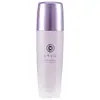What's inside
What's inside
 Key Ingredients
Key Ingredients

 Benefits
Benefits

 Concerns
Concerns

 Ingredients Side-by-side
Ingredients Side-by-side

Cyclopentasiloxane
EmollientTrisiloxane
Skin ConditioningCaprylyl Methicone
Skin ConditioningDimethicone
EmollientDimethicone Crosspolymer
Emulsion StabilisingSilica
AbrasiveRetinyl Palmitate
Skin ConditioningDimethicone/Vinyl Dimethicone Crosspolymer
Skin ConditioningOryza Sativa Bran Extract
Skin ConditioningTocopheryl Acetate
AntioxidantHelianthus Annuus Extract
EmollientRosmarinus Officinalis Leaf Extract
AntimicrobialTocopherol
AntioxidantPhenoxyethanol
PreservativeEthylhexylglycerin
Skin ConditioningCyclopentasiloxane, Trisiloxane, Caprylyl Methicone, Dimethicone, Dimethicone Crosspolymer, Silica, Retinyl Palmitate, Dimethicone/Vinyl Dimethicone Crosspolymer, Oryza Sativa Bran Extract, Tocopheryl Acetate, Helianthus Annuus Extract, Rosmarinus Officinalis Leaf Extract, Tocopherol, Phenoxyethanol, Ethylhexylglycerin
Saccharomyces/Rice Ferment Filtrate
Skin ConditioningDimethicone
EmollientWater
Skin ConditioningHdi/Trimethylol Hexyllactone Crosspolymer
Propanediol
SolventGlycerin
HumectantPolymethylsilsesquioxane
Dimethicone/Vinyl Dimethicone Crosspolymer
Skin ConditioningParfum
MaskingCamellia Sinensis Leaf Extract
AntimicrobialCladosiphon Okamuranus Extract
Skin ConditioningSerica
HumectantSericin
Skin ConditioningHydrolyzed Silk
HumectantCaesalpinia Spinosa Fruit Extract
Skin ProtectingKappaphycus Alvarezii Extract
Skin ConditioningYeast Extract
Skin ConditioningPEG/PPG-18/18 Dimethicone
EmulsifyingPolyglyceryl-2 Diisostearate
EmulsifyingDimethicone/PEG-10/15 Crosspolymer
Distearyldimonium Chloride
Trimethylsiloxysilicate
EmollientSilica
AbrasiveZinc Stearate
Cosmetic ColorantAluminum Hydroxide
EmollientEthylhexylglycerin
Skin Conditioning1,2-Hexanediol
Skin ConditioningCaprylyl Glycol
EmollientBiosaccharide Gum-4
Skin ConditioningIsopropyl Alcohol
SolventDipropylene Glycol
HumectantSodium Citrate
BufferingTocopherol
AntioxidantPhenoxyethanol
PreservativeCitral
PerfumingLimonene
PerfumingLinalool
PerfumingMica
Cosmetic ColorantTin Oxide
AbrasiveCI 77891
Cosmetic ColorantCI 77491
Cosmetic ColorantSaccharomyces/Rice Ferment Filtrate, Dimethicone, Water, Hdi/Trimethylol Hexyllactone Crosspolymer, Propanediol, Glycerin, Polymethylsilsesquioxane, Dimethicone/Vinyl Dimethicone Crosspolymer, Parfum, Camellia Sinensis Leaf Extract, Cladosiphon Okamuranus Extract, Serica, Sericin, Hydrolyzed Silk, Caesalpinia Spinosa Fruit Extract, Kappaphycus Alvarezii Extract, Yeast Extract, PEG/PPG-18/18 Dimethicone, Polyglyceryl-2 Diisostearate, Dimethicone/PEG-10/15 Crosspolymer, Distearyldimonium Chloride, Trimethylsiloxysilicate, Silica, Zinc Stearate, Aluminum Hydroxide, Ethylhexylglycerin, 1,2-Hexanediol, Caprylyl Glycol, Biosaccharide Gum-4, Isopropyl Alcohol, Dipropylene Glycol, Sodium Citrate, Tocopherol, Phenoxyethanol, Citral, Limonene, Linalool, Mica, Tin Oxide, CI 77891, CI 77491
Ingredients Explained
These ingredients are found in both products.
Ingredients higher up in an ingredient list are typically present in a larger amount.
Dimethicone is a type of synthetic silicone created from natural materials such as quartz.
What it does:
Dimethicone comes in different viscosities:
Depending on the viscosity, dimethicone has different properties.
Ingredients lists don't always show which type is used, so we recommend reaching out to the brand if you have questions about the viscosity.
This ingredient is unlikely to cause irritation because it does not get absorbed into skin. However, people with silicone allergies should be careful about using this ingredient.
Note: Dimethicone may contribute to pilling. This is because it is not oil or water soluble, so pilling may occur when layered with products. When mixed with heavy oils in a formula, the outcome is also quite greasy.
Learn more about DimethiconeThis ingredient is a silicone used to improve the texture of products and absorb oil. It does not get absorbed into the skin.
Like other silicones, Dimethicone/Vinyl Dimethicone Crosspolymer helps condition the skin by creating a barrier. In this sense, it can act as an emollient and trap moisture in.
This ingredient is a type of elastomer.
Learn more about Dimethicone/Vinyl Dimethicone CrosspolymerEthylhexylglycerin (we can't pronounce this either) is commonly used as a preservative and skin softener. It is derived from glyceryl.
You might see Ethylhexylglycerin often paired with other preservatives such as phenoxyethanol. Ethylhexylglycerin has been found to increase the effectiveness of these other preservatives.
Phenoxyethanol is a preservative that has germicide, antimicrobial, and aromatic properties. Studies show that phenoxyethanol can prevent microbial growth. By itself, it has a scent that is similar to that of a rose.
It's often used in formulations along with Caprylyl Glycol to preserve the shelf life of products.
Silica, also known as silicon dioxide, is a naturally occurring mineral. It is used as a fine, spherical, and porous powder in cosmetics.
Though it has exfoliant properties, the function of silica varies depending on the product.
The unique structure of silica enhances the spreadability and adds smoothness, making it a great texture enhancer.
It is also used as an active carrier, emulsifier, and mattifier due to its ability to absorb excess oil.
In some products, tiny microneedles called spicules are made from silica or hydrolyzed sponge. When you rub them in, they lightly polish away dead skin layers and enhance the penetration of active ingredients.
Learn more about SilicaTocopherol (also known as Vitamin E) is a common antioxidant used to help protect the skin from free-radicals and strengthen the skin barrier. It's also fat soluble - this means our skin is great at absorbing it.
Vitamin E also helps keep your natural skin lipids healthy. Your lipid skin barrier naturally consists of lipids, ceramides, and fatty acids. Vitamin E offers extra protection for your skin’s lipid barrier, keeping your skin healthy and nourished.
Another benefit is a bit of UV protection. Vitamin E helps reduce the damage caused by UVB rays. (It should not replace your sunscreen). Combining it with Vitamin C can decrease sunburned cells and hyperpigmentation after UV exposure.
You might have noticed Vitamin E + C often paired together. This is because it is great at stabilizing Vitamin C. Using the two together helps increase the effectiveness of both ingredients.
There are often claims that Vitamin E can reduce/prevent scarring, but these claims haven't been confirmed by scientific research.
Learn more about Tocopherol